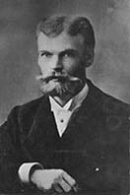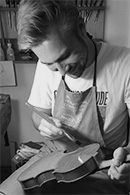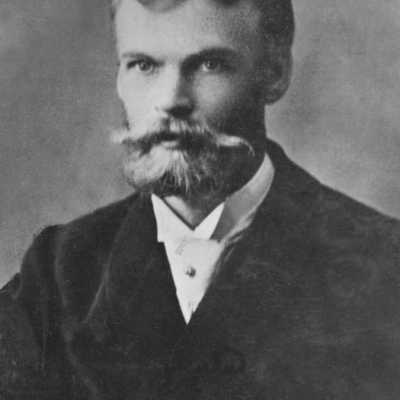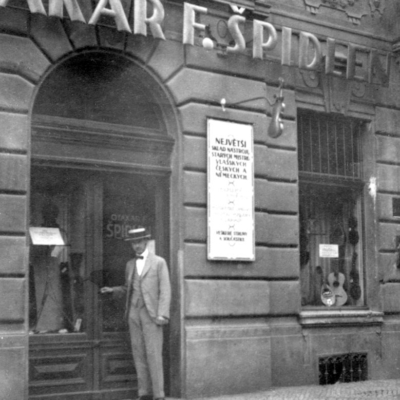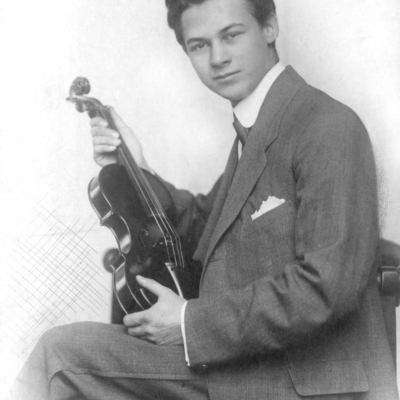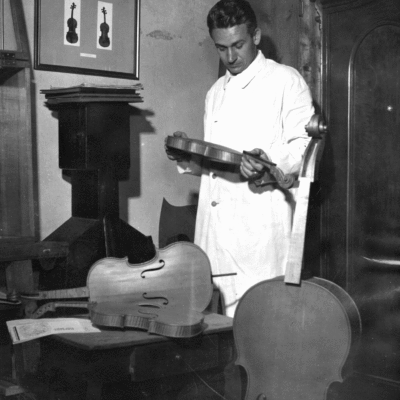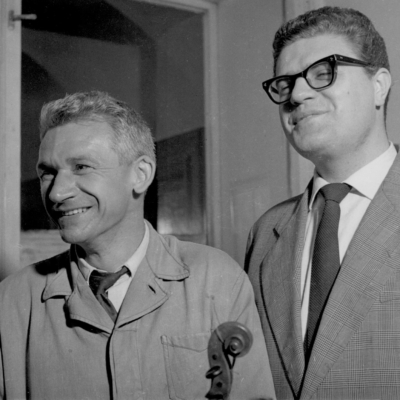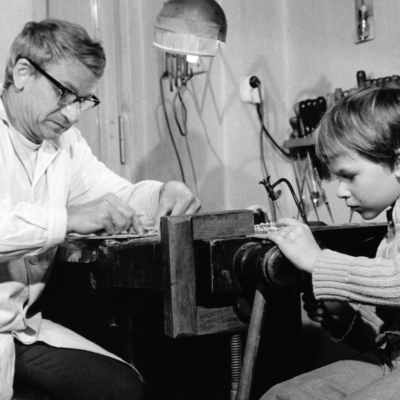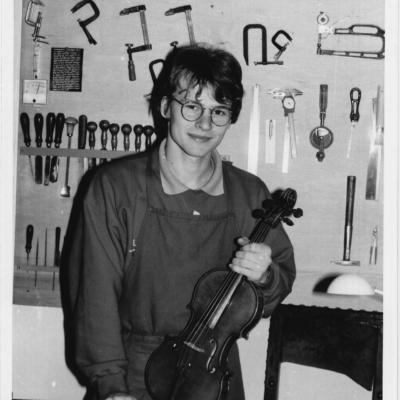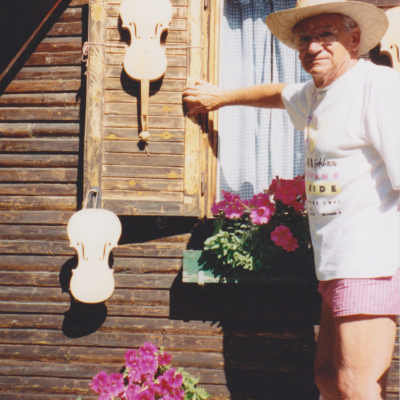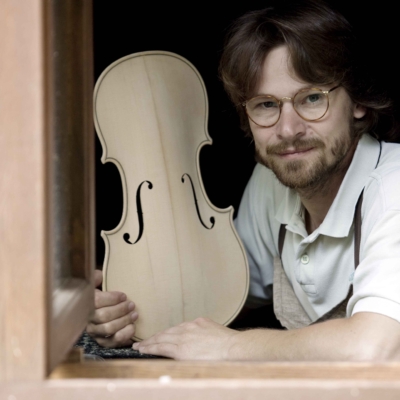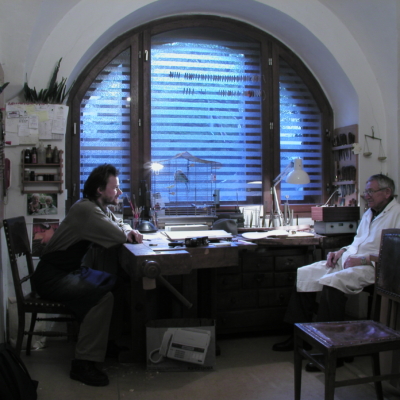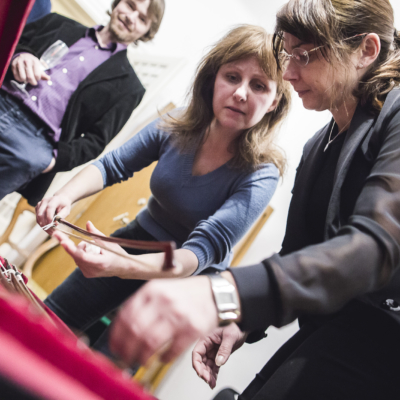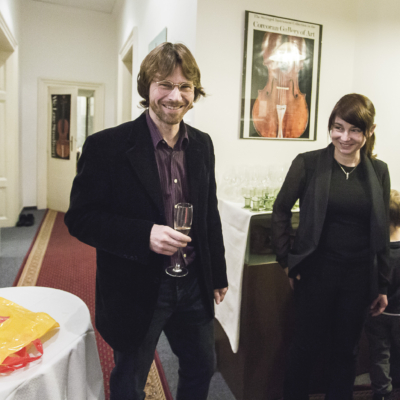Family history


The first violin maker in our family, František, came from Sklenařice in the foothills of the Krkonoše Mountains. He trained under František Vitáček, who was a student of Josef Metelka, son of Věnceslav Metelka – founder of the Krkonoše Violin Making School in Paseky nad Jizerou. Thanks to this lineage, our family is counted among the Krkonoše school of violin making, even though we have been based in Prague since 1909.
František was an extraordinarily gifted and perceptive individual, as evidenced by the remarkable progress in his craftsmanship after he moved to Russia. There, he encountered top-quality instruments for the first time—he was able not only to emulate them but also to learn from them. His early instruments from Krkonoše and those from his later years in Russia and later in Prague, are incomparable.
Otakar, his son, had a difficult start. When his father passed away, he was only 19 and had to take over the business and care for his younger siblings. Later, perhaps also thanks to his wife Marie, he discovered a talent for business. In 1926, he purchased half a building on Jungmannova Street in Prague, next door to the newly founded music publishing house Mojmír Urbánek and its Mozarteum concert hall. He relocated his shop there and even had the building raised by three additional floors. It was a bold move that put him deeply in debt. Though his business prospered for a time, things ended badly when, under Communism, both his store and property were confiscated.
Přemysl was born into an unstable era. By the time his father died, the business was gone. All that remained was a small workshop at the back of what had once been the family home. Nevertheless, Přemysl managed to absorb everything he could from the violin-making craft and was also a talented violinist. Many fine violins passed through his hands, and the artistry of Stradivari fascinated and inspired him throughout his life. Behind the Iron Curtain, in his modest workshop, he focused entirely on crafting new instruments—and in that, he reached the highest international level.
Jan found a clear role model in his father. He spent many years by his side, observing his work, his passion, and his endless pursuit of the secrets of Italian varnish. That experience, along with many discussions about their shared craft, laid the foundation for Jan’s own success. This took place under democratic conditions. The workshop grew again, expanding into a shop run by Jan’s wife Marta, and was later moved to the first floor.
The latest member of the family is František, the son of Marta and Jan. He, too, stands out for his skill and his thoughtful approach to the essence of the craft. He gained both a foundation in the trade and a sense of independence during his three years at the violin-making school in Newark, England. He also recently completed a six-month internship at the prestigious firm Carlson & Neumann in Cremona. Today, he is well on his way to preserving – and perhaps even surpassing – what his ancestors have achieved.
Posters of violins by P. O. Špidlen
In 2020, we celebrated the 100th anniversary of the birth of P. O. Špidlen, one of the most important violin makers of the modern era. To mark the occasion, we released a series of exclusive posters featuring photographs of four of his most notable violins.
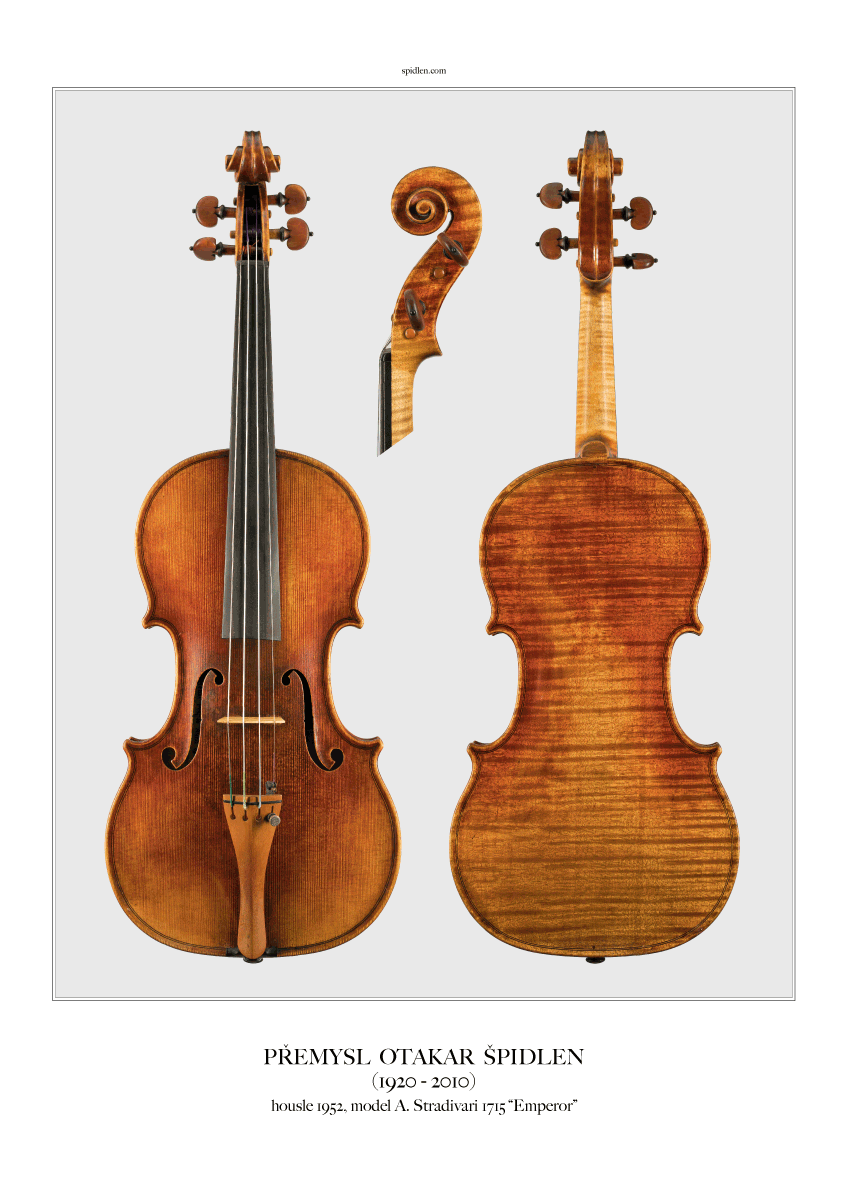

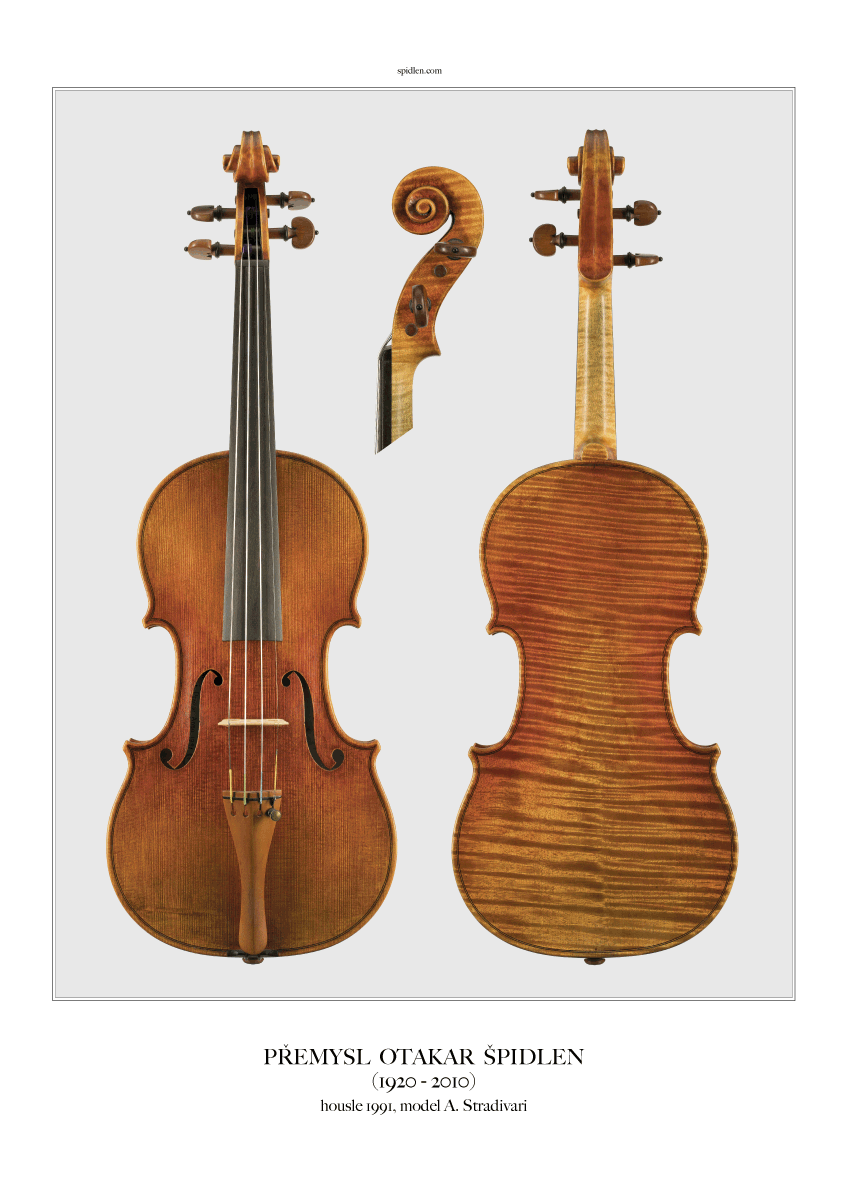
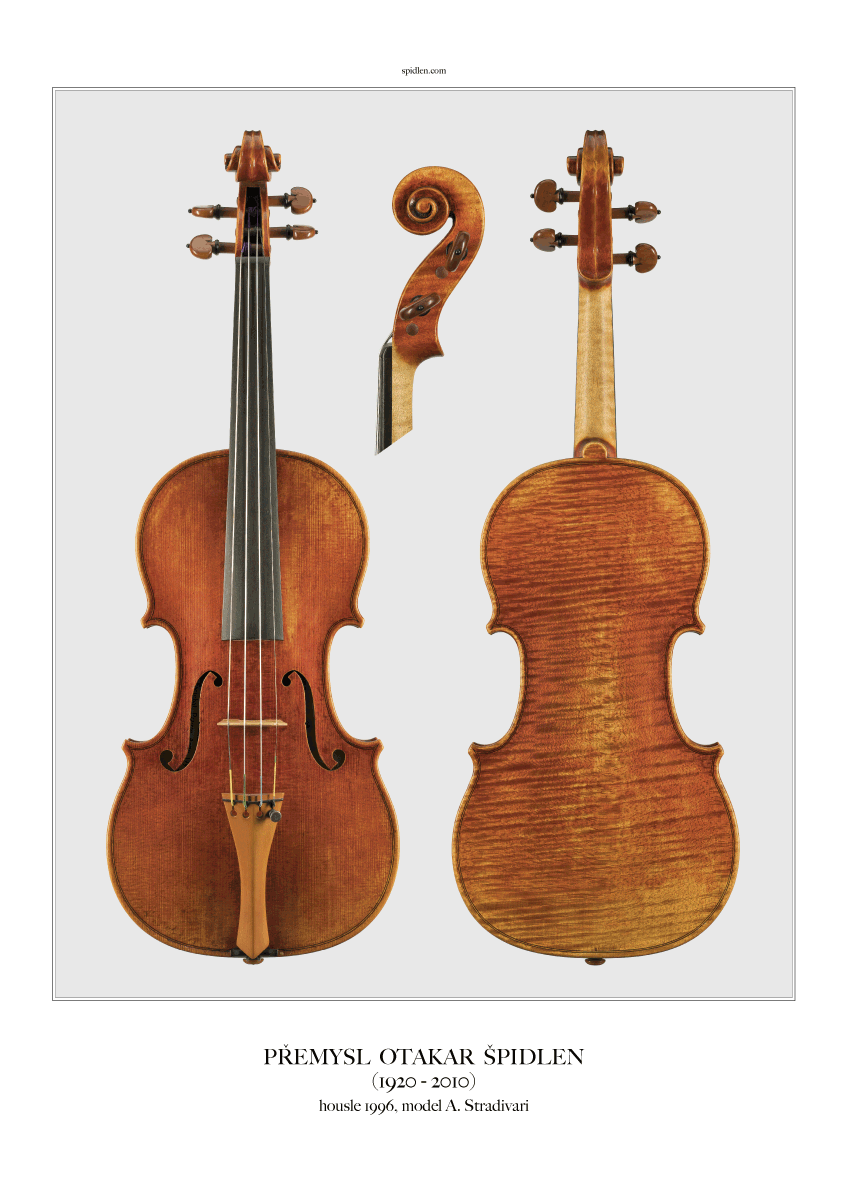
Dimensions: A1 (594 × 841 mm), paper: glossy 200g/m²
Price: 200 CZK per piece, full set (4 posters): 600 CZK
Book „The Špidlen’s, Czech Master Violin Makers“
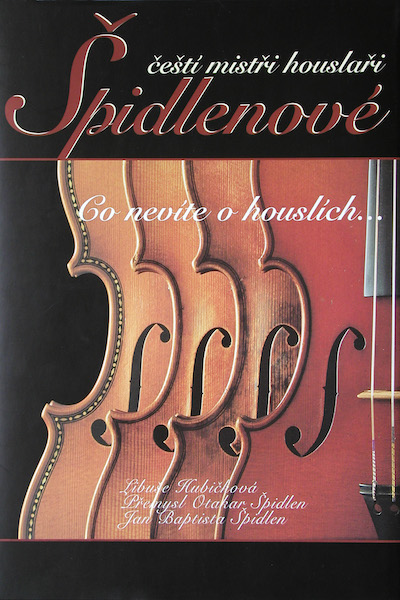 This publication on Czech master violin makers, with substantial contributions by Libuše Hubičková, was self-published by the Špidlen family in 2003 in a limited edition of 1,500 copies.
This publication on Czech master violin makers, with substantial contributions by Libuše Hubičková, was self-published by the Špidlen family in 2003 in a limited edition of 1,500 copies.
The Špidlens – Czech Master Violin Makers, subtitled What You Didn’t Know About Violins, is not only a family chronicle of four individuals who brought international recognition to their homeland—it is also a book about violins themselves: their evolution from ancient lyres and fiddles, and the intricate process of their construction. The reader will discover just how far—or how close—today’s violin makers are to the legendary trio: Amati, Stradivari, and Guarneri.
The book is enriched with charming anecdotes from the shared lives of violin makers and violinists, many photographs from the family archive, and a full-color supplement featuring images of master instruments.
UNFORTUNATELY SOLD OUT


Jungmannova 749/32
110 00, Praha 1
Česká republika

